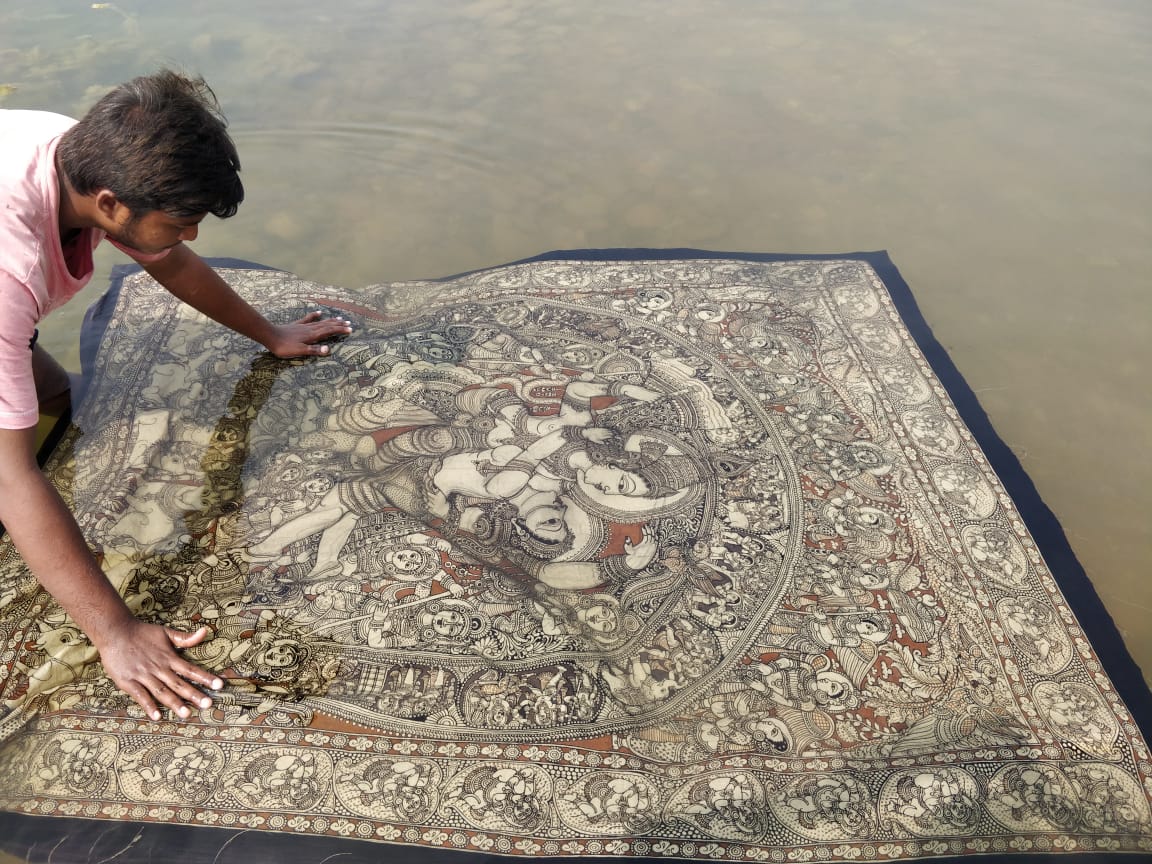

Kalamkari art is one of the oldest traditional forms of hand-painting on cotton or silk fabrics. The word 'Kalam' means pen and 'kari' means craftsmanship. This unique art form originated in the state of Andhra Pradesh, India, and is renowned for its intricate designs, vibrant colors, and timeless beauty.
The art of Kalamkari involves painting on fabric using a special pen or 'kalam' made of bamboo or tamarind tree twig. The colors used in this art form are extracted from natural sources like roots, leaves, and flowers. These natural dyes are mixed with milk or lime juice to create shades of colors ranging from earthy browns to bright yellows, pinks, and blues.
Kalamkari art is divided into two forms- Srikalahasti style and Machilipatnam style. The Srikalahasti style is known for its intricate and detailed artistry, while the Machilipatnam style is known for its bold and bright designs.
The kalamkari art involves multiple stages of hand-painting, which include washing, bleaching, outlining, filling, and finishing. This process can take several weeks before the final product is ready. The themes of the paintings often depict mythological stories, flora andfauna, and other natural elements.
Kalamkari art is not limited to just fabrics. It can also be found on home decor items such as curtains, tablecloths, and wall hangings. This art form has gained international recognition and is now used in the fashion industry as well.
In conclusion, Kalamkari art is a beautiful and intricate art form that has been passed down through generations. The use of natural dyes and the intricate detailing makes it a unique piece of art that truly captures the essence of India's rich cultural heritage.
